User experience
The heavily-modified version of Android that Astell&Kern uses on all of its touch-screen DAPs is reasonably intuitive and pretty simple to navigate – it’s no different here. The screen on the ACRO CA1000 can be “woken up” with a double-tap, or via one press of the power button on the front of the device. Main music navigation is handled via the “A” menu available from the home screen (which is accessed by tapping the “home” button on the bottom of the screen), and device settings and functionality is accessed by swiping down from the top of the screen.
It’s not exactly the snappiest UI experience and you can experience a little bit of lag from time to time – I found the Qobuz app which I installed to be more than a little frustrating. Being a relatively compact screen, the keyboard is also correspondingly tiny, making searching for files/artists a little comical at times. However, once you have your settings all in place and have your head wrapped around how to navigate things, the ACRO CA1000 is pretty easy to live with on a day-to-day basis.
If you have a large collection of hi-res files that you’re used to using from a Mac/PC (or another DAP), then it makes sense to use the ACRO CA1000 as a “DAP” to play files locally. I formatted a 1TB MicroSD card with a range of FLAC and DSD files and loaded it into the back of the unit, and voila – I had it loaded with basically my entire digital music library.
Having dual-band wifi equipped, the ACRO CA1000 will also happily perform streaming duties with your music service of choice. Qobuz is my go-to online hi-res streaming platform, and I had moderate success using it here – it felt a little buggy and often failed to simply start playing some tracks, but I expect that this will be improved by a firmware update in the near future. The wifi connectivity on the ACRO CA1000 is just “ok” – if you’re in the same room as your router it’ll work just fine, but take a couple of steps out of the room and it quickly drops down to one bar of signal. This was still plenty for streaming CD-quality 44.1kHz tracks, but did struggle to keep up with 192kHz hi-res tracks from time to time – your mileage may vary, of course.
I found after a couple of weeks that my preferred way to use the ACRO CA1000 was as a Roon endpoint when using it at home. With the CA1000 connected to the same network as your Roon “core” (in this case, my MacBook), you simply choose it as your output device and start playing from your local or streaming libraries. The great thing about Roon is your ability to have a ton of digital control over your playback experience in terms of things like EQ presets for all my headphones, so to simply do this “over air” with the ACRO CA1000 was pretty cool.
It’s also possible to completely “bypass” the DAP component of the ACRO CA1000 and use it solely as a DAC/amp. Hook it up from a source like your computer or smartphone via USB, your CD player via coaxial, or even your gaming console via an optical cable and you have yourself one pretty flexible and well-connected device on your hands. Input and output selection is managed on-screen by swiping down the top menu to show the varied options available:
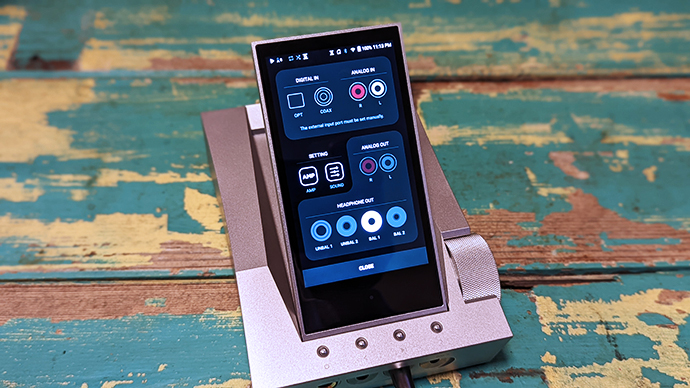
The ACRO CA1000 is designed as a headphone amp first and foremost, and I expect that’s how most eventual owners will be using it, but I found that I was able to use it almost as much out in my living room plugged into my stereo system. If you have a barebones integrated amplifier, the ACRO CA1000 is an instant upgrade in terms of adding a digital music library, streaming service and high-quality DAC to it all at once. It’s also very convenient to use in this scenario with Roon control able to be managed from the Android app, although being such a nice volume wheel you probably will want to get “hands-on” with it if you’re using it as a digital pre-amp. Otherwise, simply set it to “line out”, and manage volume downstream from your other device.
When looking at the ACRO CA1000 as a “desktop” device, it makes a pretty compelling case for simply staying there and being an all-in-one device for both IEMs and full-sized headphones, and simply staying put there. Thanks to a great range of input and outputs, a terrific and easy-to-access volume “wheel” and the added benefit of the “DAP” section, it suddenly becomes just about the smartest DAC/amp going about. Plus, when the battery is charged, it doesn’t need one single cable plugged into it at all – as someone who hates desktop clutter, this feature did wonders for my sanity. And yes, I did find myself “carrying” the ACRO CA1000 from time to time. It’s pretty cool to be listening to a pair of HD800s with it on your desktop while you’re doing a bit of work, and then heading to bed to do a bit of reading and simply place it on your bedside table.
The battery performance of the CA1000 is pretty decent under real-world circumstances, and the claims of 10.5 hours in “low” gain mode seem achievable. I experienced about a 10% drop in battery each hour when listening to IEMs, which did increase when stepping-up gain modes when using full-size headphones. However, I don’t really see many circumstances where you’d be using the ACRO CA1000 that far away from a powerpoint (you wouldn’t really take it on a walk with you…right?).
So, who is the ACRO CA1000 for exactly?
I think there are going to be three main types of people that are going to be interested in the ACRO CA1000.
Firstly, there are those of you who are mainly IEM users, who are looking to find yourself the “Ultimate IEM hub” at home. The ACRO CA1000 is far less clunky to use than a DAP for stationary listening, and with its terrific form factor, flexible power and great digital components inside, it just makes sense as the ultimate source for your in-ear collection.
Next, there are the “minimalists” – perhaps you have a couple of headphones, an IEM or two, and you need something capable of driving them all. But most of all, you simply want to get rid of the clutter of separate devices that stack up on your desktop, not to mention the tangle of all the power and interconnect cables that add up in-between them.
And lastly, I think a lot of listeners will be drawn to the ACRO CA1000 mainly as an easy-to-interact-with premium source device. With one Terabyte and change’s worth of hi-res files able to be stored onboard (plus all the benefits of streaming) with a nice high-definition touch screen to easily access everything, having an ACRO CA1000 around is an immediate way to intelligently upgrade all your other equipment with a Quad ESS DAC and all your music available at your fingertips.
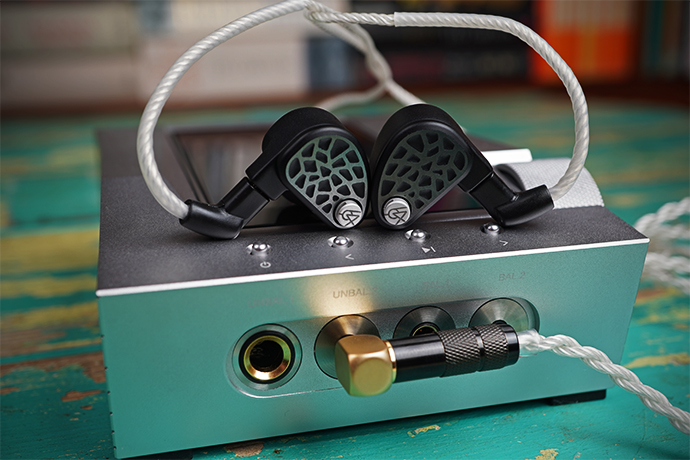
Listening to the ACRO CA1000
Settling in for some proper listening, I figured I’d start with IEMs and work my way “up” from there to see how the ACRO CA1000 handles increasingly more challenging headphone loads. Plugging in the 64 Audio U18s and firing up a bit of Prince, the ACRO CA1000 sounded like classic Astell&Kern – a completely “black” background, and a well-detailed yet smooth and coherent sound right through the frequency range. In short, the CA1000 has the right balance of both “silk” and “sparkle”.
“Low” gain is, unsurprisingly, best suited for IEMs as it gives you the most usable volume range. The U18s was happy with 50/140 on the volume wheel from the standard 3.5mm output. Moving over to the 10 ohm Craft FOUR CIEMs, I had to drop the volume down the 35 from the 4.4mm Pentaconn output – I also noticed a very slight noise floor while using these CIEMs, although this became quickly indistinguishable as soon as tunes started playing.
I was impressed with the ACRO CA1000’s immersive sense of space as well as an extremely well-sorted image when listening to the excellently-produced “Obviously” record from Lake Street Dive. The multiple vocal harmony parts are each clearly “visible” and well-separated, while the snappy percussion and walking bass parts sounded bang-on in terms of speed, texture, and decay. This record is FUN, and the ACRO CA1000 simply makes you forget that you’re not wearing a couple of tiny transducers inside your ears and instead immerses you completely inside the music.
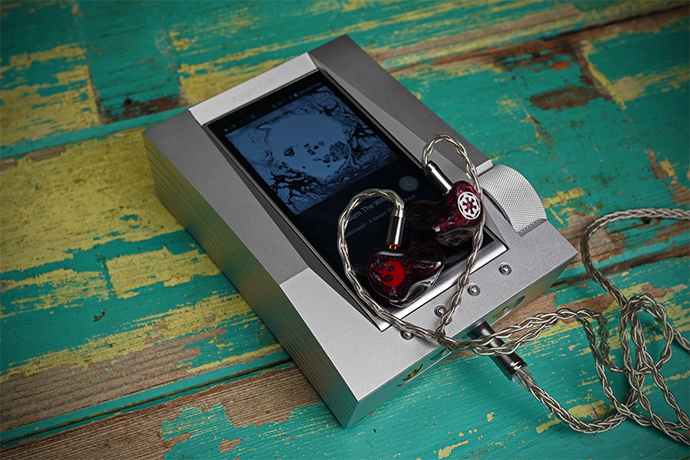
I’ve been spending some time with the Astell&Kern SP2000T, and I felt that the ACRO CA1000 had a very similar presentation to its more portable sibling when in its standard “Op amp” mode. To put this to the test, I grouped the two devices together in Roon, connected them both to an A/B switch-box, and matched their volume output. I listened to the entire “American Dream” album from LCD Soundsystem continually switching between the two Astell&Kern devices at random to see if either would yield any sonic differences. Well, after an hour and twenty-three minutes later I’d be lying if I could tell you the difference between them, but I had a bloody good time doing it. The SP2000T does become a little more easily identifiable when its “tube” mode is engaged – its upper octave becomes a little less incisive, and there’s a hair more bloom in mid-bass notes that tend to hang on a fraction longer in terms of their decay.
The ACRO CA1000 also provides users with a pretty comprehensive EQ functionality that allows you to change individual frequencies with simple sliders, or you can get a bit more hands-on with a more complex parametric system. Both work fine – I’m not a huge EQ user, but I was easily able to add a bass shelf here and there, or tame the 6K peak in the Sennheiser HD800s without too much fuss. A pretty comprehensive digital crossfeed system has also been implemented in the CA1000, that helps to reduce the associated fatigue with hard-panned stereo signals and create a more “speaker-like” presentation – I usually find “With The Beatles” pretty much unlistenable on headphones, but with crossfeed engaged, it became far more tolerable.
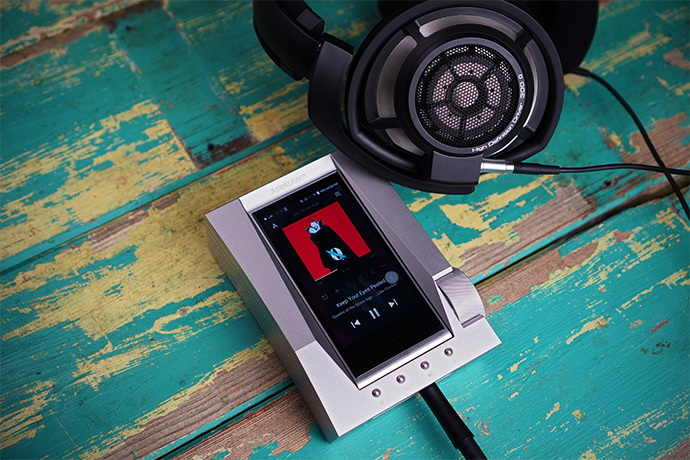
So with the ACRO CA1000 firmly impressing when it came to IEMs, next it was time to see how this “carriable” headphone amp performs with full-sized headphones. My Sennheiser HD800s came with a 4.4.mm Pentaconn that has sat completely unused in the box since I bought it, so I was glad that I’d finally have a use for it! I decided to go all-out and put the ACRO CA1000 in “Super” gain mode with the 300-ohm Sennheiser open-back flagship, and after a couple of bars of “All The Love in the World” from Nine Inch Nail’s “With Teeth” record, I decided that 50/140 was more than enough volume. The CA1000 actually does a pretty bloody convincing job with the HD800s – there’s a ton of available insight and clarity into well-recorded music, and it’s a lovely tonal match as well. “Nude” is probably Radiohead’s “prettiest” song, and the CA1000 managed to capture all the emotion in this track with the HD800s, which can lean a little sterile and surgical with the wrong amp.
An even tougher test for the little Astell&Kern wunderkind is the Audeze LCD-5, their recently-released planar flagship. Despite only being 14-ohms, the LCD-5 needed a degree more juice to reach the same volume as the HD800s, and I settled around the 65/140 mark with the LCD-5 plugged into the full-sized 6.3mm output. I can say without question that the ACRO CA1000 has more than enough under to hood to get an excellent performance out of the somewhat insensitive 90dB planar drivers of the LCD-5. Everything is as it should be in Faith No More’s “Stripsearch” – there’s plenty of dynamic punch from the bass and kick drums, there’s a terrific sense of air and accuracy – especially in the cymbals – and a convincing 3D image. Somewhat unfairly, I A/B tested the CA1000 against the several-times-more-expensive Moon 430 HA headphone amplifier, but it actually wasn’t the night/day difference that you might expect. The Moon did have a definite edge when it came to more dynamic slam as well as an overall greater sense of tonal mass which made the CA1000 sound a little lean and dry by comparison, but in terms of detail and technicalities, it was otherwise hard to pull them apart.
Final thoughts
Innovative products that arrive suddenly on the scene without precedent can often be a little confusing at first – remember when Steve Jobs announced the iPad?! I think this is very much the case when it comes to the new ACRO CA1000 – it’d be easy to dismiss it simply as a DAP stuck on top of a battery-powered amp, and calling it “carriable” is certainly selling it rather short.
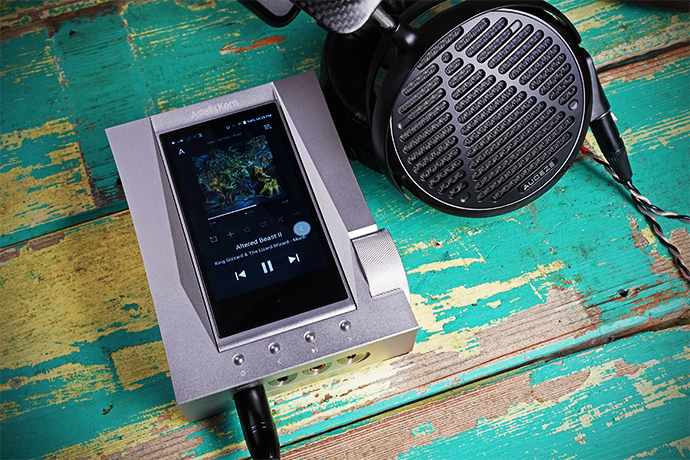
The ACRO CA1000 isn’t a perfect device and it does have some quibbles in terms of its user interface, but at the same time it’s just about the most “complete” end-to-end product on the market in terms of having a source, DAC, amp, and interface combined in the one good-looking and great-to-interact with device – it’s very much more than the sum of its parts. For desktop IEM users, this could pretty much be your “end-game”; and if you’re a full-sized headphone user and the idea of having a source attached to your headphone amp sounds appealing, the ACRO CA1000 has enough genuine driving power to make it a viable desktop amp contender – it’s the real deal.







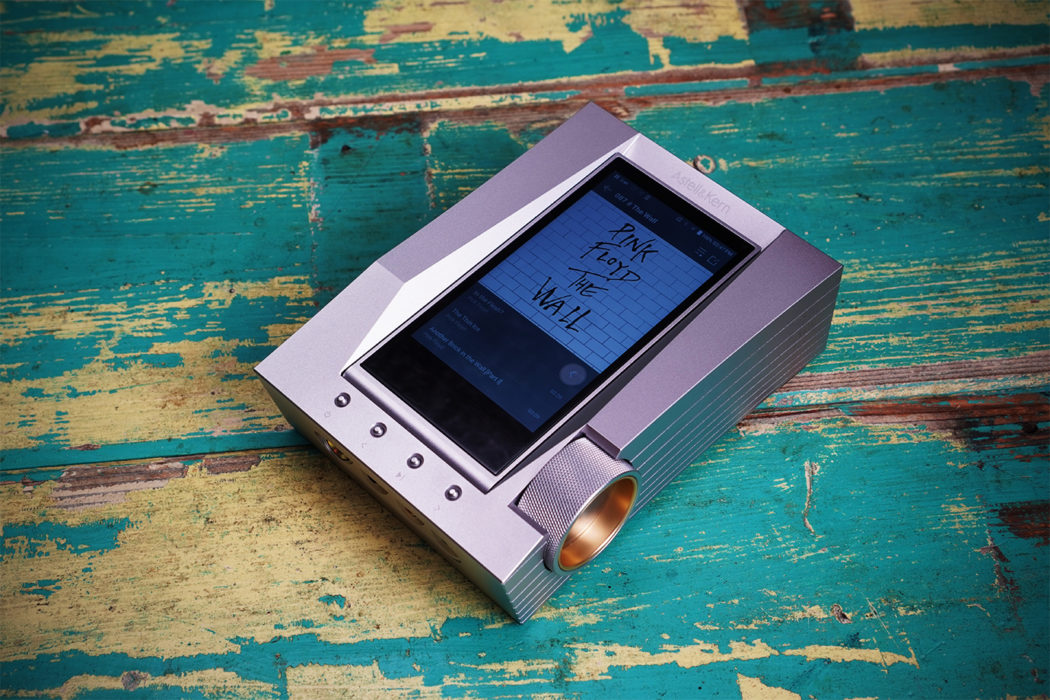
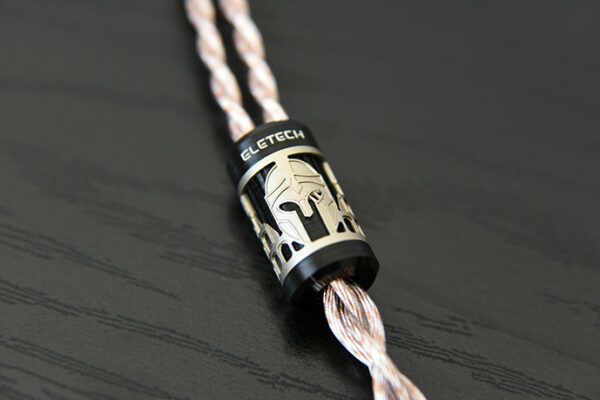
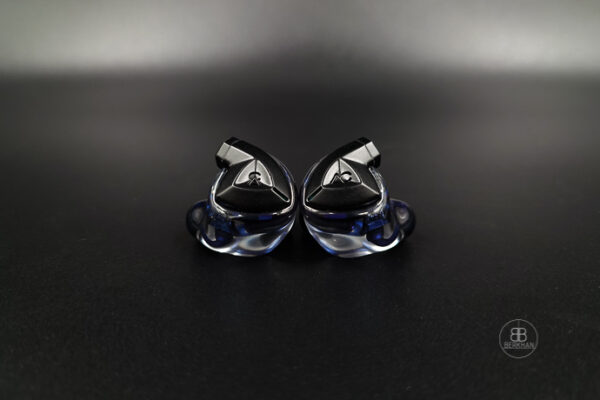
Booker
It feels like just last year you started at Headfonia! I guess the pandemic has completely warped my sense of time though… All the best for your next endeavours, you’ll be missed 🙂
Also, I actually really like the idea behind this. Recently I’ve been browsing over streaming servers, NAS drives and all the associated interconnects and cables that would be required, and an all-in-one player and storage system just seems so much more appealing due to its simplicity. But likewise, I don’t think I’d be transporting this anywhere, so something like the Naim Atom headphone edition would be an interesting competitor, or the similar oversized-DAP looking iBasso Max editions as an alternative.
Matty Graham
Thanks for the kind words mate, much appreciated!
Yep, the CA1000 is pretty compelling as a neat desktop source – I can see many people choosing one for its storage and seamless user experience alone!
Anders B
So how does the sound compare with Mojo2.. I’m looking for the next step up and don’t really need more than DAC functionality..
Philippe Sandmeier
Hi Matty, interesting review of a fairly unique product. Any comments on how it compares to Shanling’s EM5?
Good luck with your new ventures.
Matty Graham
Hi Philippe, thank you! The EM5 looks fairly similar in terms of adding a source/streaming component to a DAC/amp, but lacks the portability and battery of the CA1000. If you’re only looking for a desktop solution the Shanling may be a more affordable option, but I can’t comment on how it sounds as I’ve never heard it.
Vincent
Hey Matty, thank you for the good work on this underreviewed product! Any chance you could give me a hint about the way it compares to the SE180 (any SEM)? Thanks!
Pat
Hi! I just read a review of The ACRO CA1000T. The tester says that it can tame the trebles of the He1000V2. I have the SE and I also have sometimes the treble issue. According to your exprience, what DAP should be warm enough to calm them down?? Thanks.